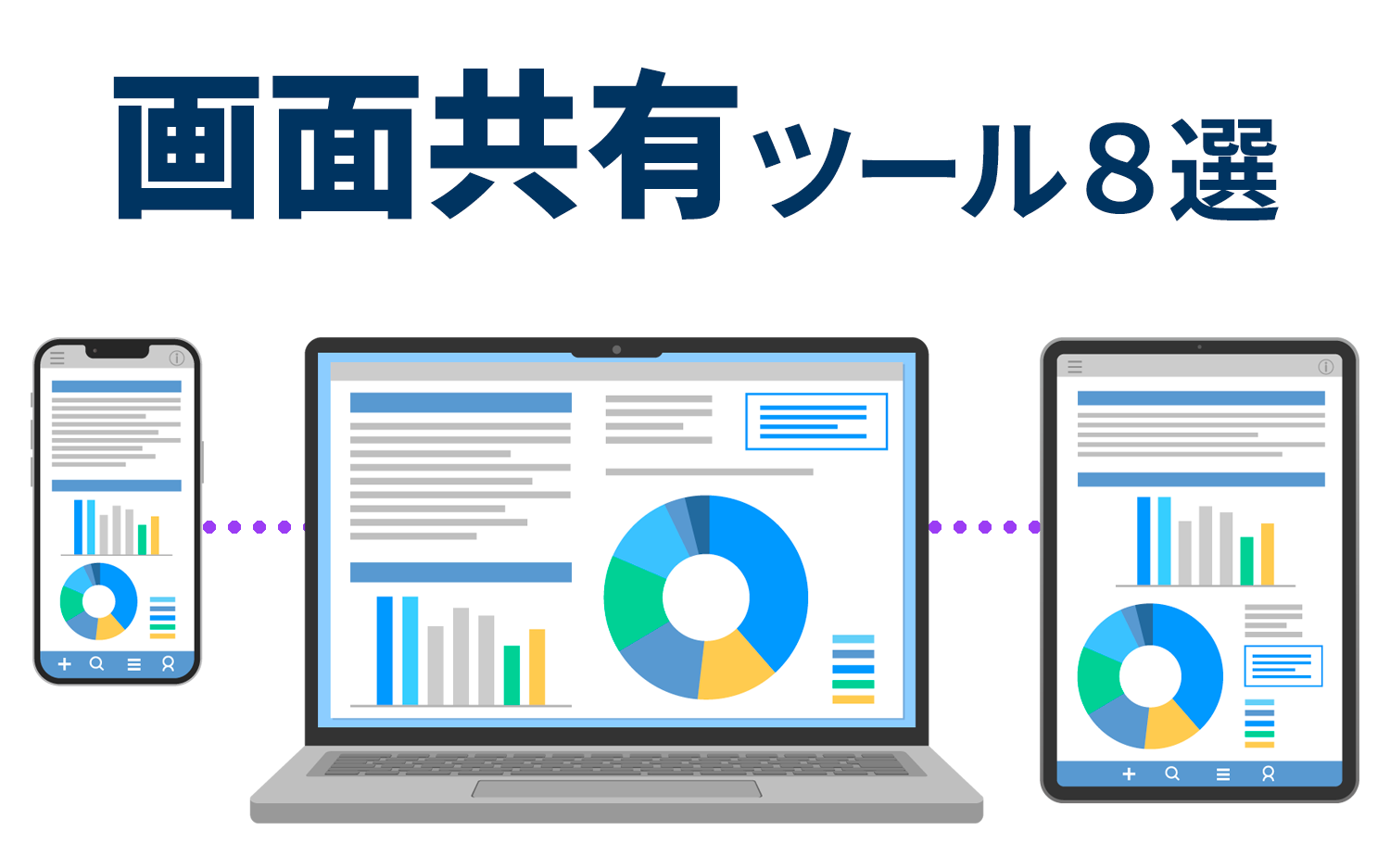A complete guide to 'Diversity' that business leaders and HR personnel should know
2024/09/27

Diversitymeans 'diversity', referring to individual differences, that is,The idea of accepting and respecting all differences, including gender, race, nationality, age, disability status, sexual orientation, religion, values, and background..
in addition to the global trend of respecting diversity,Decrease in the labor force due to globalization and declining birth rates and aging population.Due to such circumstances, promoting diversity is increasingly important domestically, especially in companies.Strategic approaches for contributing to organizational growth and innovation creation.It is said that more companies are considering this and are increasingly focusing on active recruitment of talent.
This article provides a detailed explanation of diversity. It clarifies the prevalence of diversity in Japan, its importance and challenges, and also explains 'Diversity & Inclusion' in an easily understandable manner.
Going forward,For executives and HR personnel who are considering promoting diversity within their companies.Please be sure to read this.
Table of Contents
- 1 The domestic prevalence of diversity is increasing.
- 2 Four Backgrounds for the Current Attention to Diversity in Japan.
- 3 The Importance of Promoting Diversity in Companies
- 4 What is 'Diversity & Inclusion (D&I)'?
- 5 Three challenges in promoting diversity
- 6 Six measures for companies to promote diversity
- 7 Conclusion
The domestic prevalence of diversity is increasing.
First, let’s look at the current state of diversity in Japan through some numerical data. Below is aDetailed materials on the Japan Foundation's 'Diversity & Inclusion Awareness Survey'graph based on the data.
◆ Awareness of Diversity/Diversity & Inclusion
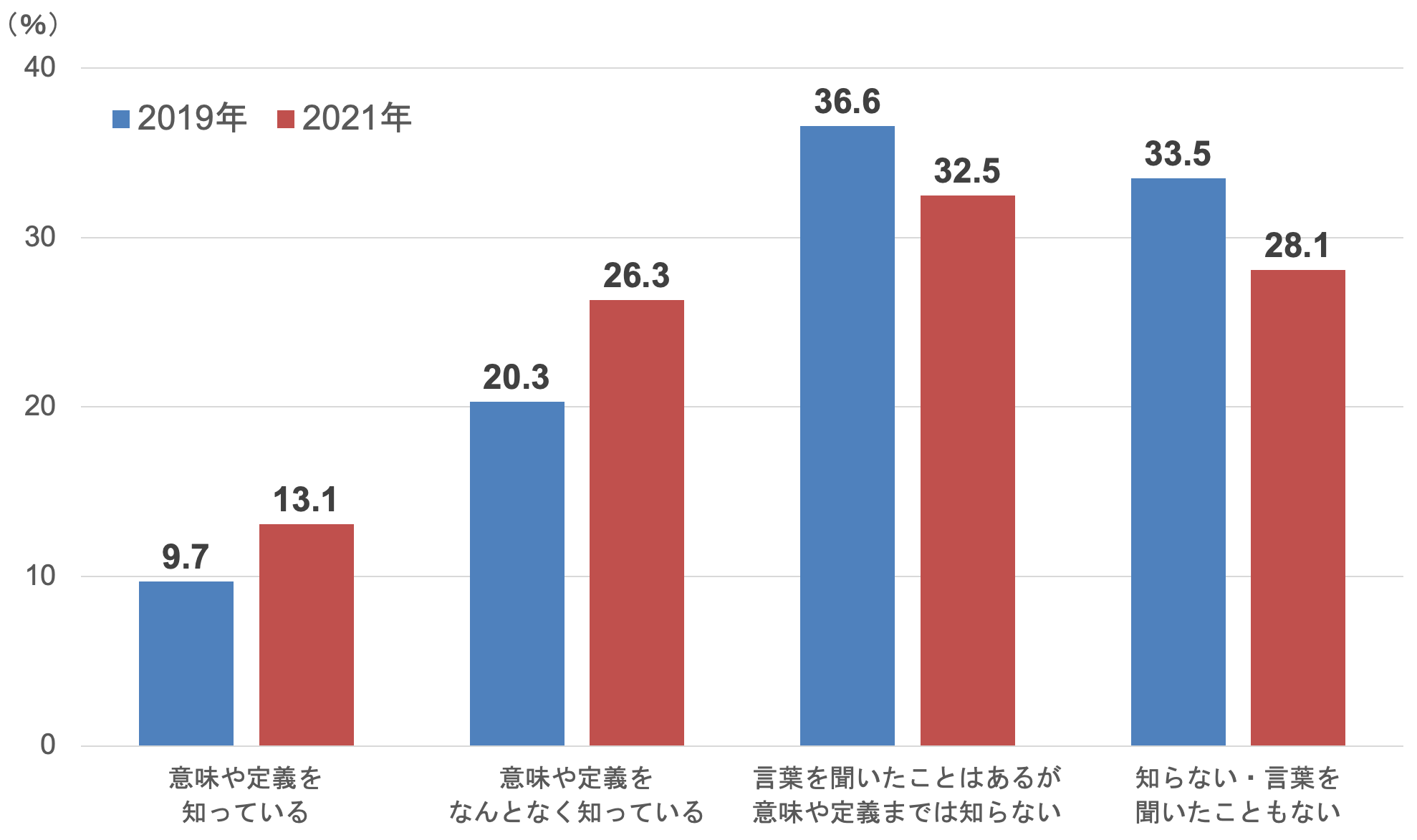
Source:Survey on Awareness of Diversity & Inclusion (Japan Foundation / November 30, 2021)The author has created graphs accordingly.
Compared to 2019,In 2021, social awareness of diversity, or diversity and inclusion (DE&I), increased.This can be seen. This is due toThe Tokyo 2020 Olympic/Paralympic Games is considered a catalyst for this.。
Now, let's examine how far companies have progressed in their efforts. First, we'll look at the current state of female workers. Below is a graph showing the trend of female employment from 2010 to 2023.
◆ Trend in the Number of Female Workers
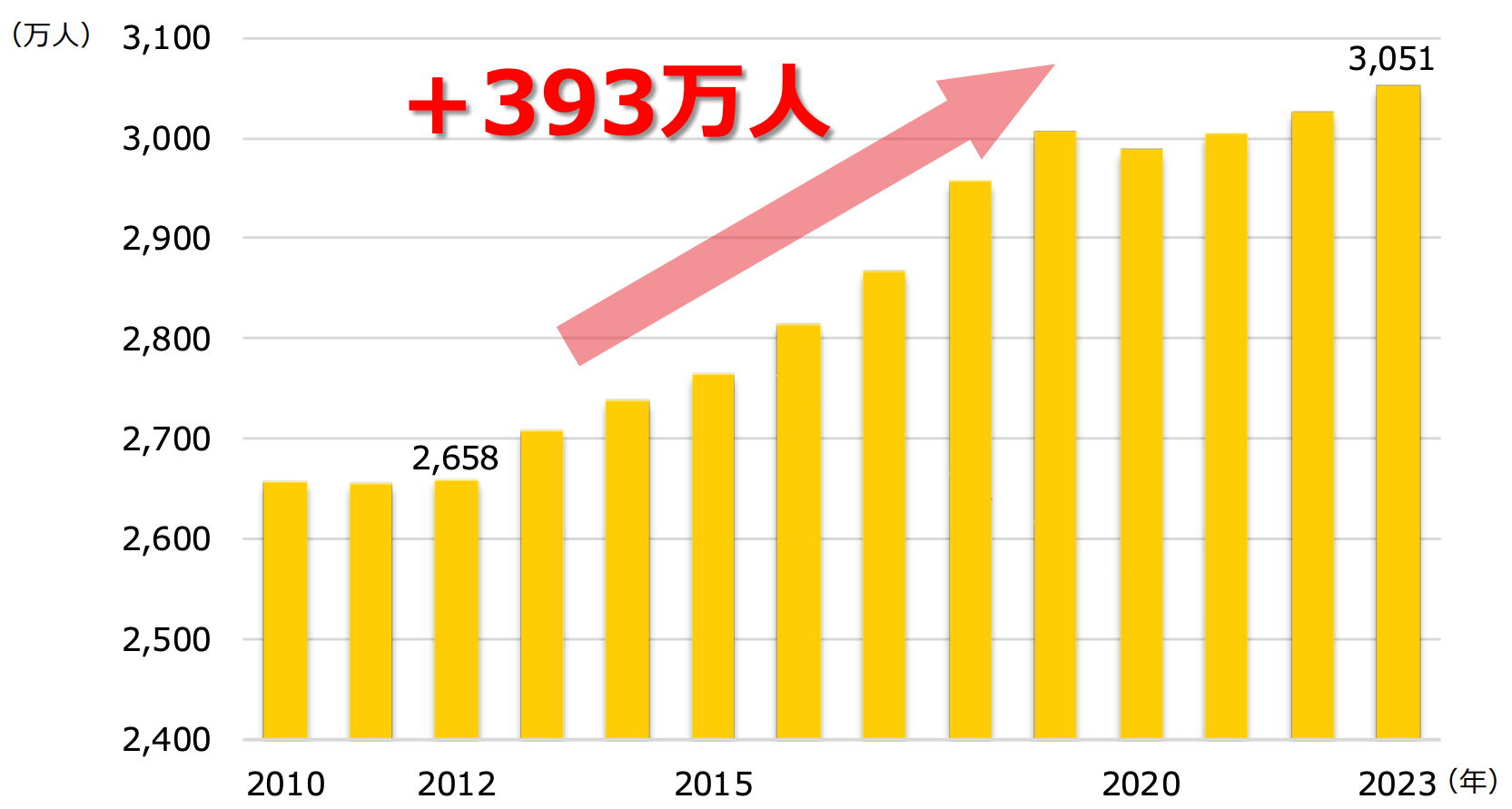
Between 2012 and 2023,The number of female workers has increased by approximately 3.93 million.This is reflected in the fact that,Implemented from April 2016, the 'Women’s Participation Promotion Act (2019 Amendment)the establishment of a favorable working environment for women.This is considered one of the factors.
Next, let's look at the ratio of female managers.
◆ Trend in the Proportion of Women in Managerial Positions in Private Companies
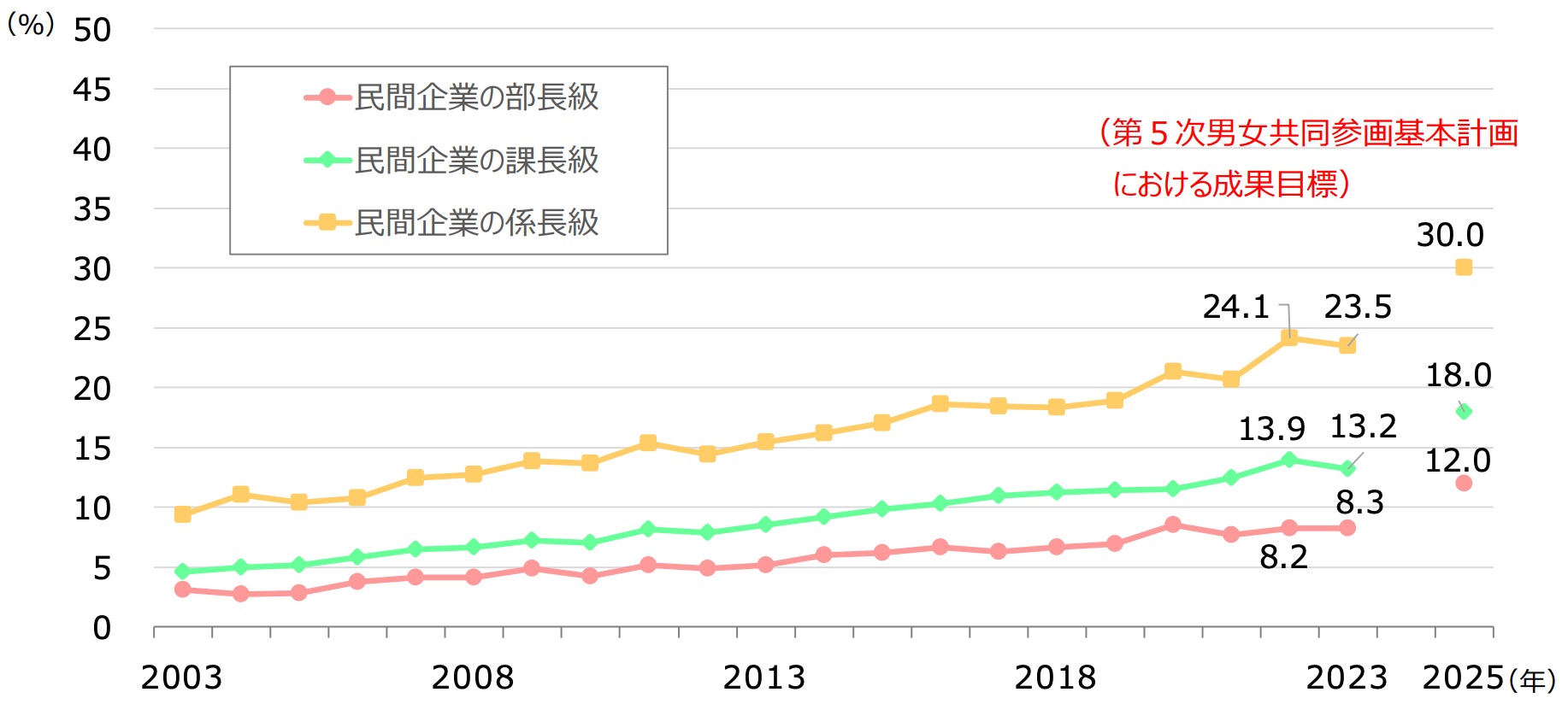
The ratio of women in managerial positions has been increasing year by year.However, it is.The higher the position, the lower the percentage of women.The growth rate is also disappointing.
Next, regarding the current situation of employment for people with disabilities and foreigners, please see the graph below.
◆ Trends in Employment of People with Disabilities in Private Enterprises
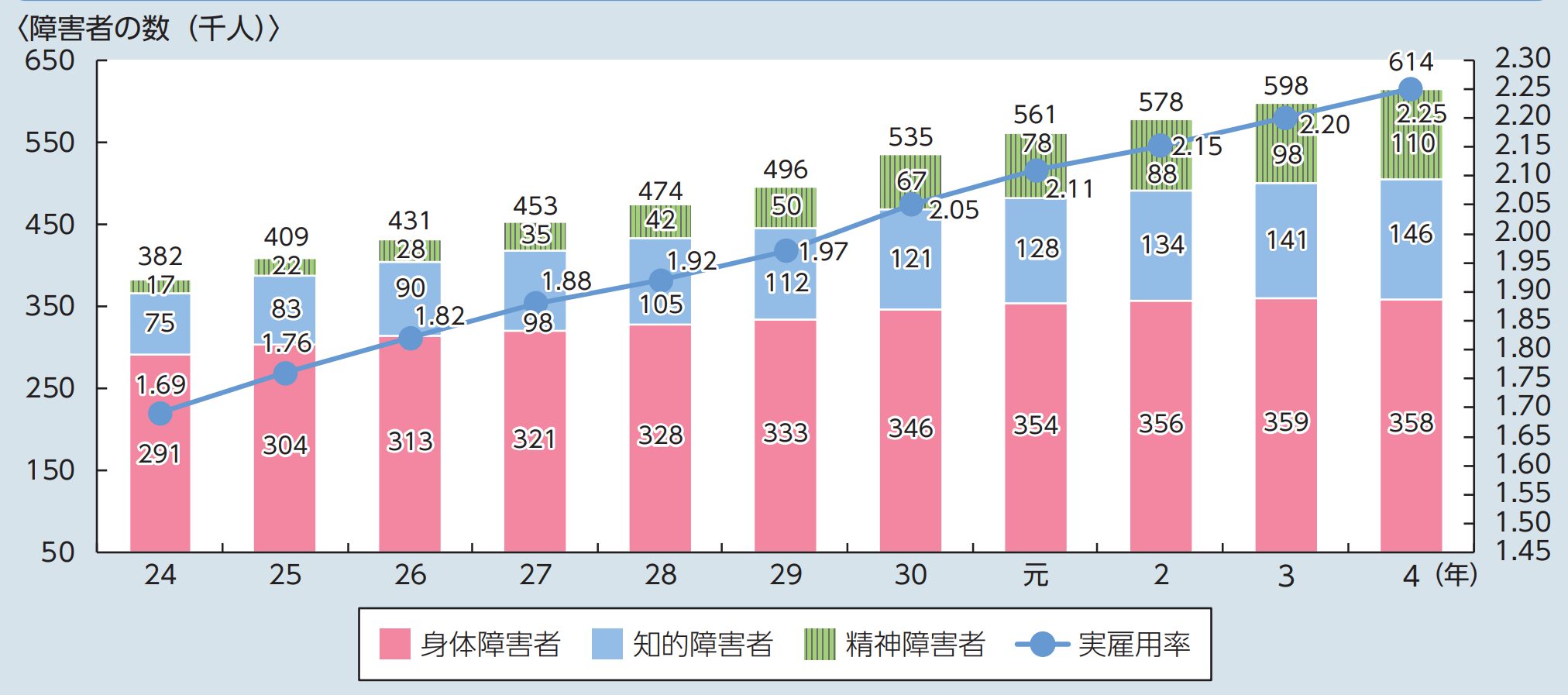
◆ Trends in the number of foreign workers by visa status
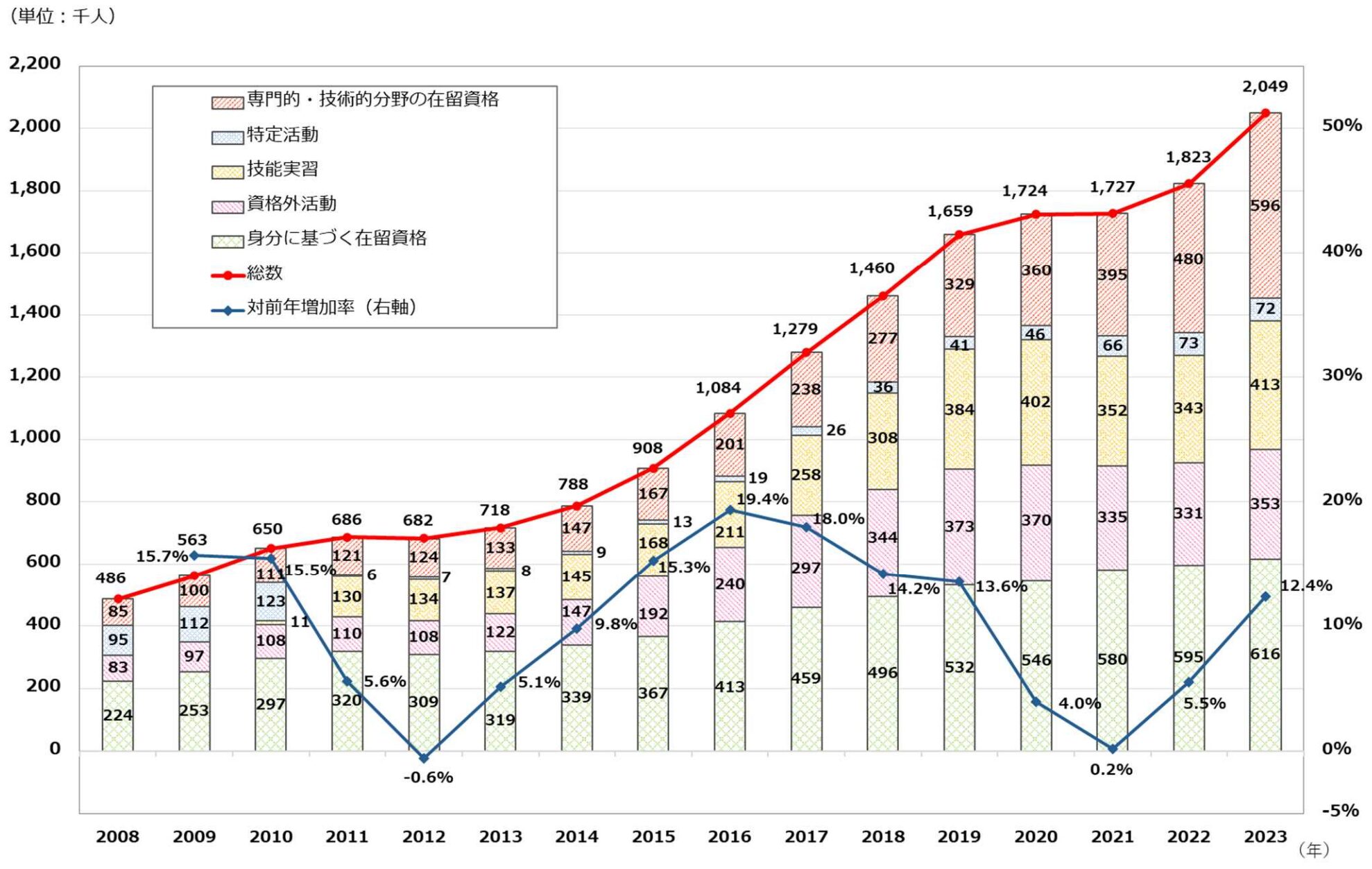
Source:Summary of 'Foreign Employment Status' Report (Ministry of Health, Labor and Welfare)
「Disability Employment Promotion ActAfter the amendment, the employment rate has been raised.Because of this,Employment of people with disabilities has been steadily increasing.
In addition,The number of foreign workers is also increasing, especially after the COVID-19 pandemic, exceeding 2 million.According to the Ministry of Health, Labour and Welfare, the increase in the number of foreign workers is attributed toStrengthening job support for international students in Japanese companies and promoting the acceptance of highly-skilled foreign talent (those with advanced expertise and skills) by the governmentand so on.
As such, it is clear that there is progress in utilizing diverse talent in domestic companies and municipalities, and that the concept of diversity is becoming more entrenched.
Now, let's take an international perspective.
Japan's diversity from an international perspective
In the previous section, it was mentioned that the spread of diversity is advancing in Japan, but how does it compare with other countries? Below is a graph comparing the proportion of female workers, including those in management positions, in various countries.
◆ Proportion of women among workers and those in managerial occupations (international comparison)
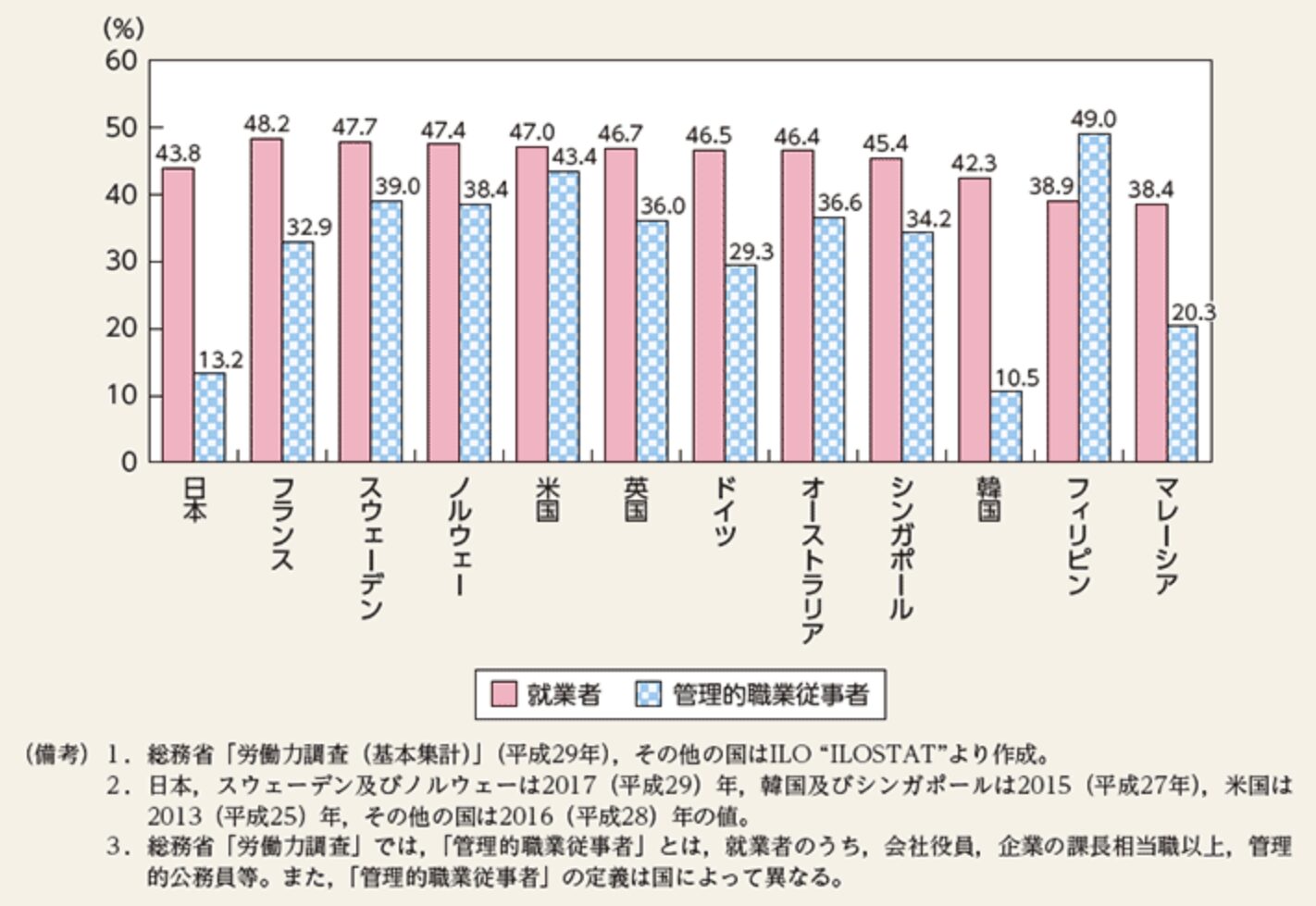
In terms of just the percentage of female workers, it is approaching international standards. However, on the other hand,The proportion of women in management is extremely low, indicating that women's social participation is inadequate.
Additionally, please see the graph below regarding the employment situation of people with disabilities.
◆ Trends in public social expenditure (as a percentage of GDP)
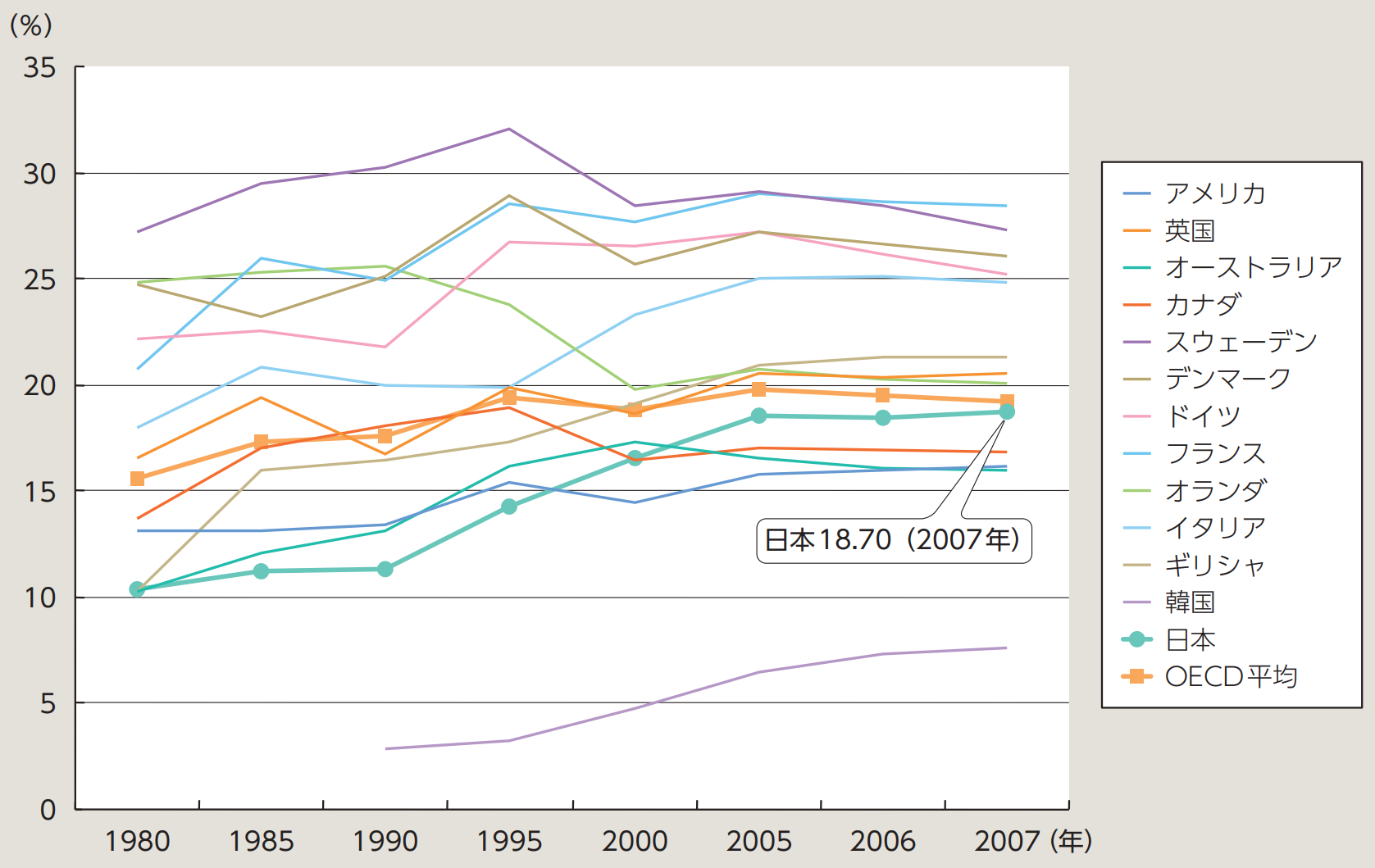
Public social expenditure refers to the funds that the government and public institutions spend in areas such as pensions, healthcare, unemployment measures, childcare, welfare, and other social policy fields.Economic support, infrastructure development, and the provision of welfare services to promote the employment of persons with disabilities are necessary.This is also being utilized.
Although the data is old, looking at the graph indicatesJapan's public social expenditure is at a low level internationally, indicating that the government's response to the employment of persons with disabilities is inadequate.
Despite this situation, it cannot be said that the recognition and prevalence of diversity in Japan is advancing.Currently, it must be said that we are somewhat behind internationally.
Next, let's explain the background that has led to an increased focus on diversity in Japan.
Four Backgrounds for the Current Attention to Diversity in Japan.
As mentioned at the beginning, there are four backgrounds contributing to the current focus on diversity in Japan.
Background 1: Progress of Globalization
One major background for the focus on diversity is that globalization has increased opportunities for foreigners to work. Companies can leverage talent with different nationalities and cultural backgrounds toA system capable of responding to the global marketthe need to organize.
Therefore, it is essential for companies to actively adopt diversity andIncorporating diverse perspectives and values has become essential for enhancing international competitiveness.。
Background 2: Decline in the Labor Force
Amidst the serious issue of declining birth rates and an aging population in Japan, a decrease in the working-age population has become a significant challenge. Below is a graph showing age-specific population projections by the Ministry of Internal Affairs and Communications.
◆ Trends in aging and future projections
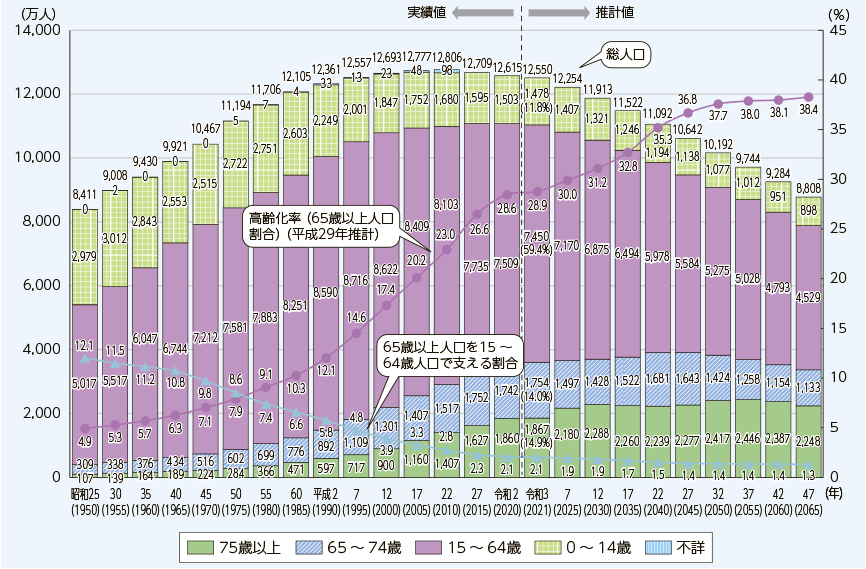
Such predictions are made.the decline of the working-age population (ages 15-64)Through this,The worsening of issues such as labor shortages and shrinking economic scale due to declining domestic demandis a concern. In response to this,Harnessing the potential of underutilized talent such as women, the elderly, people with disabilities, foreigners, and LGBTQ+ individuals.is needed.
By promoting diversity, each company is expected to utilize a broader range of talents, thereby achieving sustainable economic growth for the entire country of Japan.
Background ③ Changes in Social Values
As the world demands the achievement of SDGs goals,Diversity and inclusion are recognized as important values.In addition,Consumer and job seeker values are also shifting towards emphasizing diversity.Please see the graph below.
◆ Job seekers' awareness survey on Diversity & Inclusion (D&I)
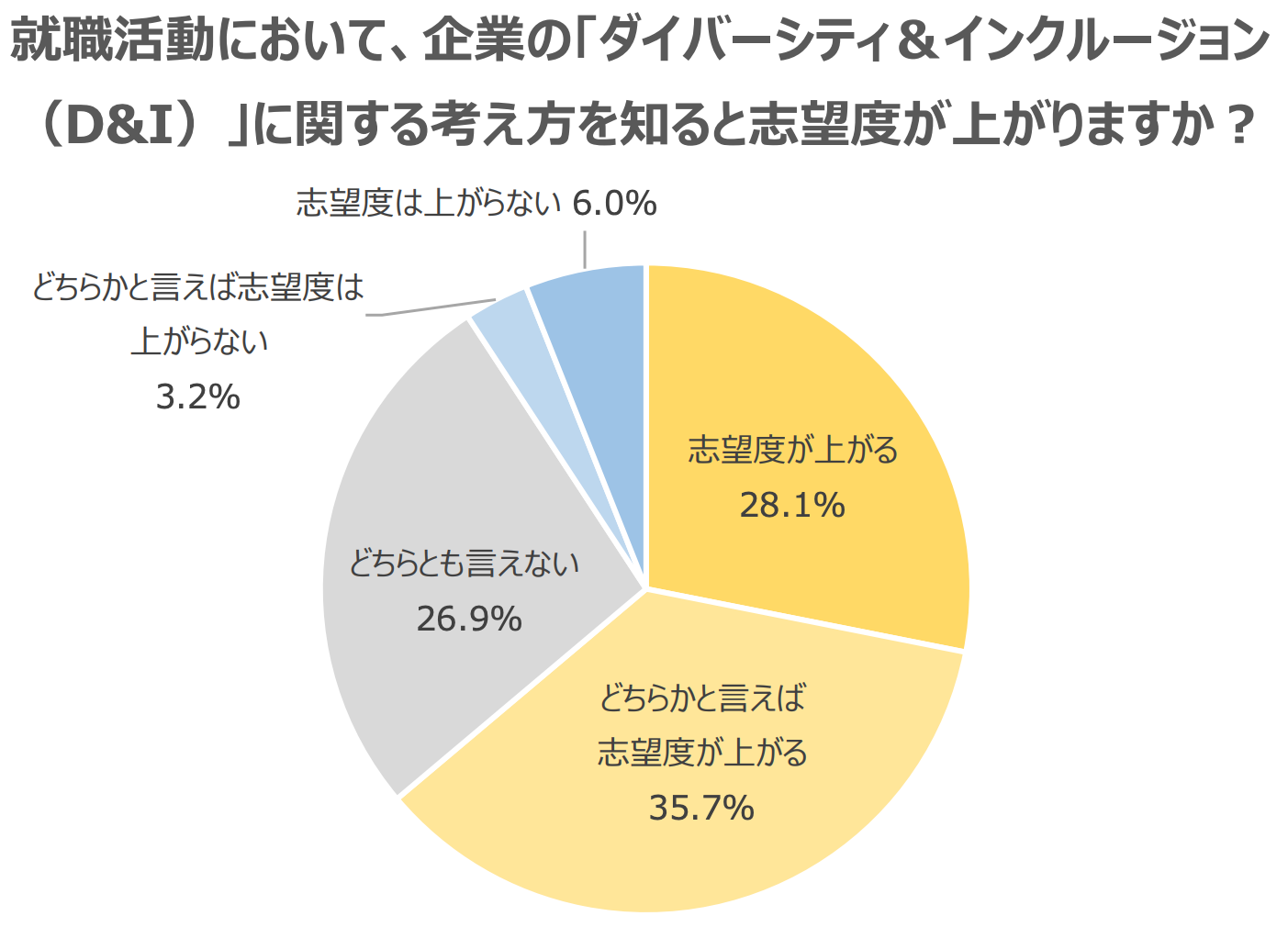
Source:Information gathering on diversity and inclusion (Gakujo Co., Ltd.)
In this way,Companies actively engaging in diversity are favorably perceived by job seekers and can enhance their social evaluation.。
Background 4: Creating Innovation
By gathering people with diverse backgrounds and experiences,Different perspectives and ideas emerge, fostering innovation.It is said that in places like IT companies and startups in Silicon Valley,It has been revealed that organizations with diversity are more likely to generate innovation.Japanese companies have also begun to pay attention to the value of diversity.
Reference: why diversity is sought in Silicon Valley (AdverTimes.)
Due to such backgrounds, the importance of diversity is increasing among Japanese companies.
The Importance of Promoting Diversity in Companies
Now, let's delve into the importance of promoting diversity in companies.Diversity is considered important for companies for the following four reasons.
1: Increasing competitiveness
As mentioned earlier,Promoting diversity fosters diverse perspectives and ideas within the organization, enhancing problem-solving and creativity.This leads toinnovative products and servicesCreating this makes it possible to enhance competitiveness.
2: Enhancement of talent acquisition and engagement
By accepting diverse talent, companies can secure a wide range of personnel.Especially talented individuals tend to seek environments where they are respected and can thrive.The promotion of diversity isEnhancing a company's recruitment capacity and making it easier for employees to find purpose in their work leads to increased engagement.
3: Responding to market diversification and customer needs
As market and customer needs diversify, greater internal diversity allows organizations to respond more precisely to customers. Employees with diverse backgrounds can,can deepen understanding of different customer segments and new markets.This could also contribute to business expansion.
4: Enhancing corporate image and brand value
Currently,Corporate CSR activities are gaining attention.Companies actively promoting diversity areBeing recognized as a socially responsible company enhances brand value.This leads toThis increases the likelihood of gaining trust from customers and investors.leading to long-term improvements in corporate value.
For CSR, we have compiled details based on case studies in a separate article, so please read this article in conjunction.
Related Articles:Benefits and Case Studies of CSR that Create Corporate Social Value
Now, let’s introduce success stories of companies that have actively worked on diversity.
Successful case studies of companies utilizing diversity: Shiseido Co., Ltd.
Shiseido Company, Limited is known as a pioneering company in Japan for promoting diversity & inclusion (D&I) and achieving results in this area.
Shiseido has been working to promote women's participation since the 2000s,Ranked No. 1 in the overall ranking for three consecutive years in 'Best 100 Companies for Women' (Nikkei WOMAN, Nikkei Womenomics Project).has received.
The Shiseido Group in JapanThe percentage of female managers is 34.7% (as of January 2021), and the percentage of women on boards is 46.2% (as of March 2021).This is significantly above the average for domestic companies and is a remarkable result of promoting diversity.
In addition, in the entire year of 2019, sales, operating profit, and net profit reached all-time highs, particularlyThe eight main global brands achieved double-digit growth.has been achieved.Operating profit increased by 51.4% year-on-year to 10.5 billion yen.This has led to.
While there is no clear data showing direct causal relationships between these records and diversity initiatives,Masahiko Uotani, the CEO of the company, stated that 'Diversity will become an important pillar of corporate management' and emphasized that the company is focusing on D&I efforts.。
The positive impact of actively pursuing diversity on Shiseido's performance can be inferred from improvements in the company's management policies and brand value.
Reference: Diversity & Inclusion (Shiseido Corporate Information)、2019 Performance (Shiseido Financial Data)、Empowering diversity to become a global brand from Japan — Masahiko Uotani, President and CEO of Shiseido (Sustainable Brands Japan)
Next, let’s take a closer look at diversity & inclusion.
What is 'Diversity & Inclusion (D&I)'?
Up to this point, the term 'Diversity & Inclusion (D&I)' has been mentioned several times,Diversity and D&I are often discussed together and are deeply related, yet each has distinct meanings.
Definitions and Relationships of 'Diversity' and 'Inclusion'
Diversity focuses on factors such as race, gender, age, nationality, religion, sexual orientation, disability status, values, and experiences,The very existence of 'differences' in organizations and society.focusing onRecognizing the existence of diverse people and incorporating individuals with diverse perspectives and backgrounds into the organizationRefers to.
On the other hand, 'inclusion' means 'embrace',allowing diverse individuals to be accepted equally,A state where those differences are respectedRefers to.
◆ Definition of Diversity and Inclusion
| Diversity | Inclusion |
| The presence of diverse individuals | Diverse individuals are thriving together while having their differences respected. |
In D&I, the focus is on creating an environment in which diverse people can actively participate and contribute within organizations and communities.
For example, companies hiring diverse talent (such as women, foreigners, LGBTQ+ individuals, and people with disabilities) is an effort in diversity. However,Inclusion initiatives create an environment where diverse talents can express their opinions and demonstrate their abilities, ensuring that everyone is evaluated equally.This is the strategy of corporate communication.
In other words, 'diversity' refers to the existence of diversity itself,'Diversity & Inclusion' means utilizing that diversity and creating an environment where everyone can thrive.It means.To achieve inclusion, diversity is a prerequisite.
Inclusion is essential in diversity initiatives.
It is essential to not only hire diverse talent but also to practice inclusion, creating an environment where these individuals can voice their opinions and fully demonstrate their abilities.
Without inclusion, there is a possibility that people with diverse backgrounds may become isolated or have their opinions ignored.As a result, it can hinder the ability to leverage the diversity within the organization.
Therefore, when companies tackle diversity,Inclusion is essential not only to leverage diverse talents but also to transform that diversity into organizational strength.By doing this, inclusion creates an environment where diverse talents can flourish, resulting inA foundation for companies and organizations to grow sustainably.This is how it is built.
For a detailed explanation regarding inclusion (inclusive), please refer to another article.
Related Articles:Inclusive is a philosophy that aims for a society in which all people can live together.
Three challenges in promoting diversity
Diversity is becoming an important and standard concept in future society. However, there are several challenges that arise from the coexistence of individuals with diverse backgrounds and values.
Here, we will discuss three main challenges. Particularly in Japan, these challenges should be addressed with a solid understanding of the national character.
Challenge 1: Unconscious Bias
Humans areHaving unconscious biasesThere are barriers, which are significant factors preventing the realization of diversity. For example,Prejudices based on gender, age, nationality, etc., can influence hiring and promotions, ultimately hindering diversity.
Since it can be difficult to simply discard preconceived notions, this bias canThere is a need to gradually overcome this through conscious effort.。
Challenge 2: Difficulty in achieving inclusion
As explained in the D&I section, simply hiring diverse talent does not achieve diversity. It is necessary to create an inclusive environment where that talent can thrive within the organization. However,When a company's organizational culture and working methods are uniform, creating an environment where diverse talents can work authentically becomes time-consuming and costly.
Therefore, to promote D&I,The commitment of top management and a collective effort across the organizationThis is important.
Challenge 3: Benefits Are Not Easily Seen.
While promoting diversity brings long-term benefits,There is an aspect where it is difficult to perceive the effects in a short period.Therefore, executives and employees shouldThe importance of diversity can be difficult to grasp, leading to stagnation in efforts.To prevent this,Continuously evaluate diversity initiatives.and it is important to create a system for sharing results.
Six measures for companies to promote diversity
Considering the challenges mentioned in the previous section, companies will implement specific measures as follows to promote diversity.
◆ Six Concrete Measures Necessary for Promoting Diversity
2: Promotion of various working styles such as flexible work hours and remote work.
3: Implementation of training and educational programs
④ Introduction of career support and mentorship programs
5: Improving internal systems and environments.
6. Evaluation and compensation system for promoting diversity
These effortsPracticing throughout the organizationBy doing so, companies can create an environment where diverse talent can flourish, thereby effectively promoting diversity.
Conclusion
In modern Japan, diversity has become an extremely important endeavor for adapting to social and economic changes such as declining birth rates, an aging society, and the diverse needs arising from globalization. Particularly,Japan is lagging behind in international efforts to promote diversity, making proactive advancement of D&I essential.
By promoting diversity, companies canIt can lead to the emergence of diverse perspectives and ideas within the organization, promote innovation, and enhance competitiveness.Additionally, by creating an environment where diverse talents such as women, foreigners, and LGBTQ+ individuals can thrive,Attracting talented individuals contributes to enhancing corporate reliability and brand value.supporting sustainable growth.
Today, promoting diversity has become a top priority in corporate management, and by embracing diversity, organizations can develop flexibility, innovation, and competitiveness that is relevant globally.
-
Contact Us
-
Request Info
-
Free Trial
-
Partner System





